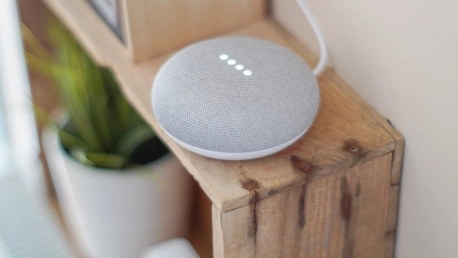Speech recognition technology has been around for a few years now, but voice started achieving its full potential in 2020, the unfortunate year that marked people and businesses across all industries, all over the world. Due to easy accessibility, voice assistants and technology have grown in popularity as people needed the perks of accessing digital assistance anywhere and anytime.
By 2023, it is estimated that there will be 8 billion digital assistants, as the technology is rapidly growing, users are becoming more familiar with voice tech, and organizations ready to establish better relationships with customers.
Today, voice technology trends can benefit consumers and businesses. In this article, we’re exploring the following:
- Voice in the healthcare industry
- A mobile voice strategy
- Voice in business and BI
- Voice assistants in smart TVs
- Interactive audio ads
- Voice in the retail space
- Hearables
Voice in healthcare
Voice assistants changed our search behavior, that’s no doubt. And with the pandemic still here, AI-powered chatbots are helping with screening and triage, conducting surveys, and providing vital information regarding Covid-19.
Telemedicine is constantly growing and developing and during the past year, there has been an increase in the number of conversational assistants, from virtual consultants to chatbot therapists. This increase is giving healthcare professionals an advantage over competitors and making their services more accessible than ever, especially for people who can’t leave their homes.
As a long-term trend, conversational assistants are here to stay, and more touchless solutions are on the way to combat the virus.
A mobile voice strategy
The increasing preference to talk with digital devices is one of the reasons why voice search has become so popular in the past two years. Every day, 32% of people aged 18-64 are using voice search. Moreover, studies show that 27% of internet users prefer voice search on their mobile devices.
This comes as no surprise since mobile has the potential to provide a personalized user experience. Plus, the use of voice comes in handy and beneficial, removing unnecessary manual efforts.
Voice in business and BI
Integrating voice tech in a business comes with many benefits, and here are just a few:
- Improved information sharing
- Better accessibility
- Easier documentation or note-taking
- Automation of smaller tasks
- Removal of administrative tasks
- Saved time
Multitasking is not a new practice in busy companies, and it’s changing employee behavior. And employees can benefit from using voice assistants.
Moreover, voice-enabled BI is excellent for accessing insights and improving decision-making. BI virtual assistants remove the need to log into the BI application and search for information.
Voice assistants in smart TVs
A rather obvious choice when it comes to voice assistants, relatively new in the market, is voice in Smart TV. Today, TV consumers’ needs have grown, expecting a media powerhouse equipped with the latest technology. Now, remotes are increasingly becoming redundant since users have the option to navigate through content by using voice commands.
Smart assistants help users browse channels, launch applications, search for content, and so much more, depending on the TV.
Interactive voice ads
Voice-enabled audio ads can prompt users to engage directly with the advertisement using their own voice. In short, interactive voice ads simulate a real-life conversation between two people.
This type of ad is becoming increasingly popular as marketers start monetizing voice search. Popular audio streaming services have already introduced interactive ads, changing the expectations of users: more personalized interactions are in demand, and the need for “humanizing” the shopping experience is growing.
Voice in retail
Voice technology is making its mark on retail during the pandemic, becoming a utility for stores, benefiting both customers and employees.
Amazon stores are using devices that provide location and product information to consumers. Moreover, the smart earbuds launched by Amazon are a new solution offered to customers to help them quickly find items in Whole Foods. There are also voice assistants in Walmart, where employees can benefit from an assistant that can easily look up inventory, communicate with other team members, and request information.
Hearables
Voice assistant use through hearables increased by 103% from 21.5 million in 2018 to 43.7 million in 2020. On the hearables market, Apple is still dominant. AirPods have the best user ratings in the product category on sites like Amazon.com and the devices show lower levels of customer requests for improvement than other brands.
With opportunities for innovation of personalized audio technology, there are smaller competitors creating hearables that are game-changing, focused on hearing enhancement and improving wellness.
Conclusion
Voice technology is one of the fastest developing technologies in recent years, and voice search is changing human behavior, making life easier and entering our daily routines, offering a more human relationship with technology.
The near future comes with improved voice tech, expanded to almost all areas of life and business.









